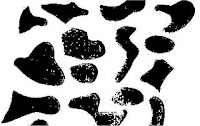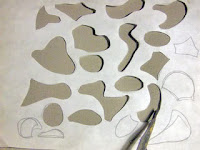we all have beloved books in foreign languages that we wish to understand beyond the photos. mine are mostly in japanese and with this system as well as jim breem's invaluable resource page i can more or less get by.
this is a simple tutorial that helps in getting the gist of things, especially if you are familiar with the topic.be ready for some hilarity though as automatic translations don't care for nuances or second meanings!
what you are doing here is converting a text image to text and working from there. i cannot thank husband -san enough as he put me on this track for my trip to japan. my mobile equipped w. google translate saved my skin more that a couple of times when my reading skills were not enough.
i am using adobe acrobat for ocr recognition, photoshop for the images and microsoft word for translating the text on a pc platform. i encourage mac users to add their knowledge here as mac is a foreign country to me.
- scan your image, 150 dpt is enough.if you can adjust levels in your copier better. pump up whites and blacks and eliminate in between grays.
- open in an image processing program (i'm using ps here, but gimp, corel or similar can do it) adjust levels-you want a sharp image- and save as pdf.
- open your pdf file in adobe acrobat. edit>select all or ctrl+A the characters will be selected and the images ignored.
- go to documents>OCR recognition / click recognize text. you'll see a blue progress line at the bottom. when finished the text will deselect.
- go back to edit> select all or ctrl+A copy or ctrl+X. this will put the image converted into text in the clipboard.
- open your word processing program. here i'm using word document new >ok.> paste
- with the cursor select the part/s that need to be translated, right click on them and click on translate from the pop up menu. select the document's language and the target language from the dialog.
- once you have the translation you can select it from the translator, copy it and paste it below the original text.
- save the document. give it a name or the page number if there are more in the operation. it would be a good idea to create a folder for each book translated.good for mental sanity.
- if you don't have a scanner available you can photograph the pages, put them through an image program and proceed from step 2 onward.
hope this is helpful.
neki desu



















